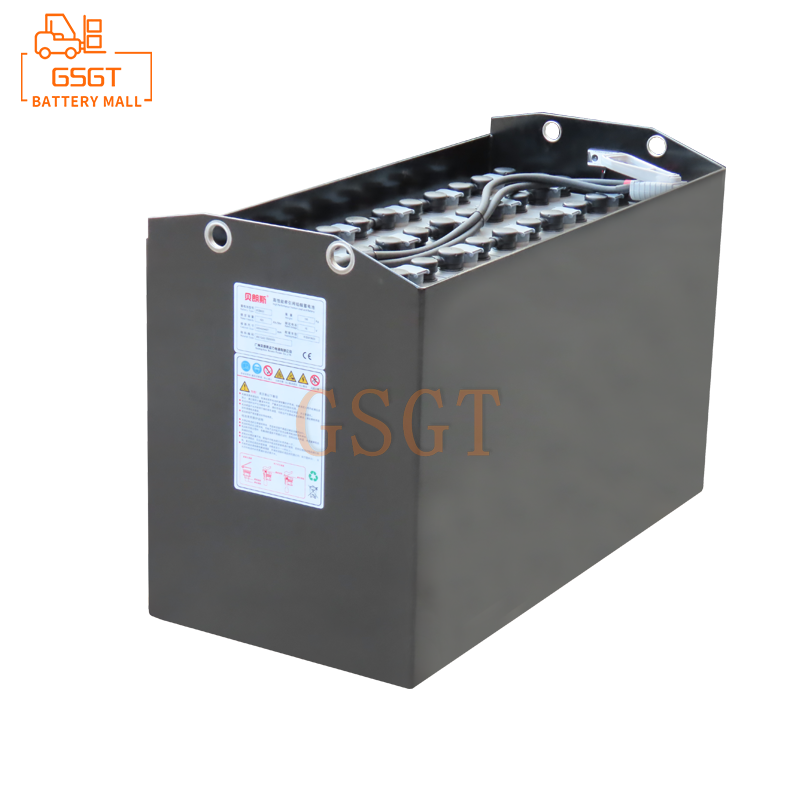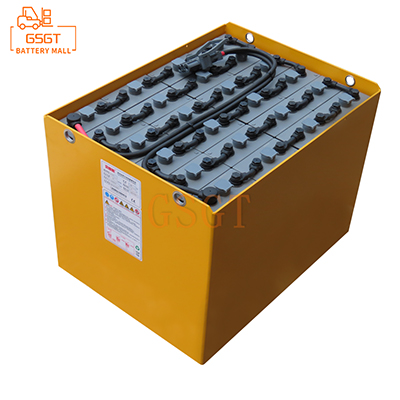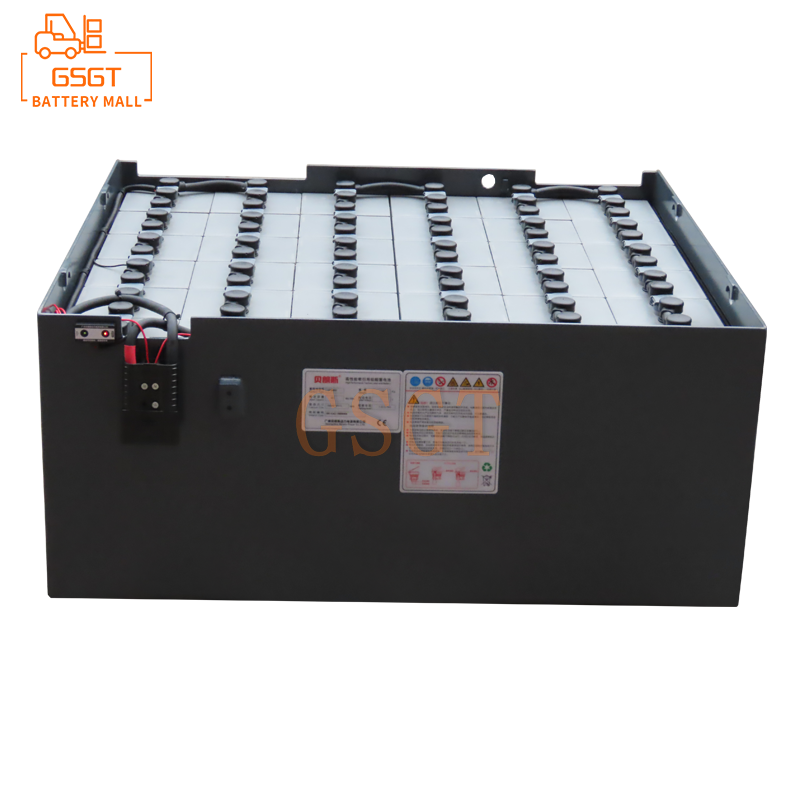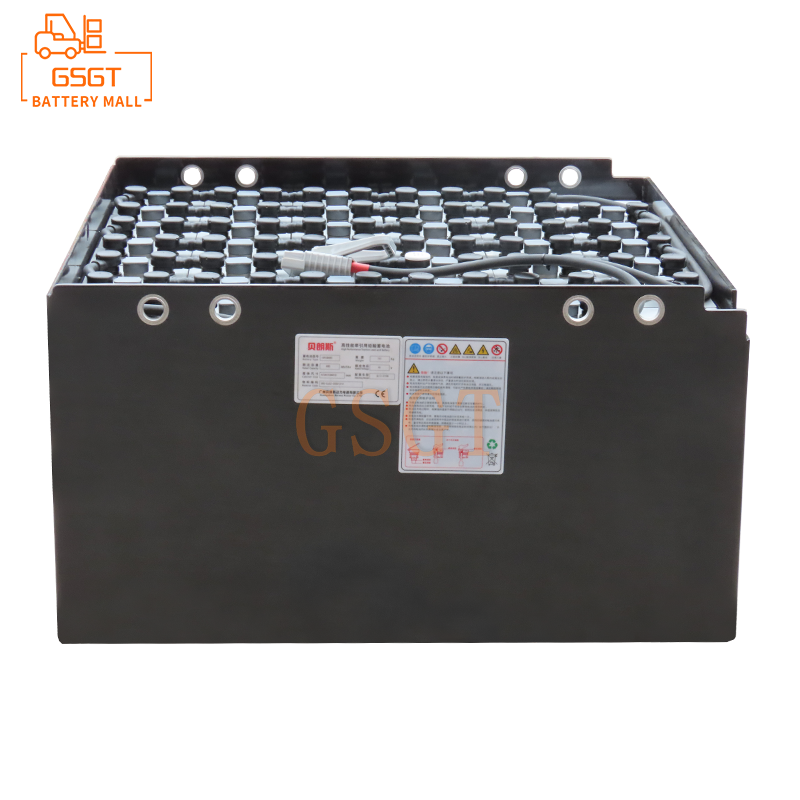Time:2025-05-26 11:25:09
Browse:610
Consider the structure and type of the forklift
The structural designs of different types of forklifts vary, which directly affects the selection of installation positions for lead-acid batteries. For instance, in counterbalanced forklifts, to maintain the balance and stability of the forklift when handling goods, lead-acid batteries are usually installed at the rear of the forklift, close to the counterweight. This can make the center of gravity distribution of the forklift more reasonable, avoiding overturning accidents caused by unstable center of gravity when picking up and transporting heavy goods. Many models of counterbalanced forklifts from common brands such as Heli and Hangcha have adopted this installation method.
As for reach trucks, due to their operational characteristics of handling and stacking goods in narrow Spaces, they have higher requirements for the flexibility of the forklifts. This type of forklift usually places the lead-acid battery at the bottom of the vehicle, close to the drive wheels. This layout helps to lower the center of gravity of the forklift, enhancing its stability during turning and driving. At the same time, it does not occupy too much upper space, making it convenient for the forklift to shuttle between shelves. Brands such as Linde and Hyster have fully taken this factor into account in the design of battery installation positions for their reach trucks.
Electric pallet trucks, due to their relatively simple structure, are mainly used for horizontal transportation of goods and usually have lead-acid batteries installed in the middle of the vehicle body. This not only makes it convenient for the operator to observe the battery status at any time during the operation, but also enables the vehicle to maintain a better balance during driving.
Pay attention to the convenience of operation and maintenance
Easy to access: The installation location should ensure that operators and maintenance personnel can conveniently approach the battery. This means that there should be sufficient space around the battery to facilitate daily inspections, water addition, cleaning, as well as the inspection and maintenance of connection lines, etc. For instance, some forklifts install batteries under the openable cabin doors or design dedicated battery pull-out mechanisms to enable the batteries to be easily removed or pushed in from the forklift, significantly enhancing the convenience of maintenance. If the battery installation location is too concealed or difficult to reach, it will not only increase the difficulty and time cost of maintenance work, but also may lead to some maintenance work not being carried out in a timely manner, thereby affecting the service life of the battery and the normal operation of the forklift.
The operation line of sight is not affected: The installation of the battery must not obstruct the normal line of sight of the operator. During the operation of forklifts, operators need to constantly monitor the loading and unloading of goods, the driving path, and the surrounding environment, etc. If the battery is installed too high or within the critical line of sight, it may block the operator's view and increase the operational risk. For instance, installing the battery at a suitable height behind the driver's seat of the forklift will not only not affect the operator's view of the front and side, but also ensure the stable installation of the battery.
Sufficient maintenance space: To facilitate maintenance personnel to conduct in-depth maintenance and troubleshooting of the battery, adequate space should be reserved around the installation location. This includes space that can accommodate maintenance tools, as well as space where batteries can be disassembled and components replaced when necessary. For instance, in some large forklifts, the battery installation area is designed to be quite spacious, with dedicated inspection channels set up around it, facilitating maintenance personnel to carry out comprehensive battery maintenance without disassembling too many other components.
Ensure safety and stability
Prevent collision and damage: Lead-acid batteries are relatively fragile. During forklift operations, it is necessary to avoid collisions and impacts on the batteries. Therefore, the installation location should be chosen in a place where the forklift structure can effectively protect the battery. For instance, the battery can be installed within a specific frame of the forklift chassis. This frame can be made of sturdy steel and is designed with a cushioning structure. When the forklift is accidentally hit, it can absorb and disperse the impact force, reducing damage to the battery. At the same time, there should be no sharp objects or components around the battery to prevent the battery casing from being scratched or damaged by these objects during the vibration or movement of the forklift, which could lead to safety issues such as electrolyte leakage.
Firmly fixed: During the operation and movement of forklifts, vibration and jolting occur. To ensure that the lead-acid battery remains stable at the installation position at all times, a reliable fixing method must be adopted. Common fixation methods include using dedicated battery mounts, bolt fastening, and rubber buffer pads, etc. The battery mounting frame should be customized according to the size and shape of the battery to ensure a tight fit and provide stable support. When tightening bolts, it is necessary to ensure sufficient tightening torque to prevent the bolts from loosening during vibration. Rubber buffer pads can play a role in shock absorption and buffering, further reducing the impact of vibration on the battery. For instance, at the battery installation positions of some forklifts, a thick rubber pad is laid between the battery and the fixed frame, which can not only effectively fix the battery but also reduce the transmission of vibration.
Keep away from heat sources and fire sources: Lead-acid batteries generate a certain amount of heat during charging and discharging, and the electrolyte inside them is flammable. Therefore, the installation location should be far away from heat source components such as the forklift's engine and exhaust pipe, as well as areas that may generate fire sources, such as electrical switches and spark plugs. Generally speaking, a safe distance of at least 0.5 meters should be maintained between the battery and the heat source. In addition, the battery installation area should maintain good ventilation to promptly dissipate the heat generated by the battery, avoiding the impact on battery performance and lifespan due to excessively high temperatures, and even preventing safety accidents.
Take into account factors of the working environment
Temperature influence: The performance of lead-acid batteries is highly sensitive to temperature. High-temperature environments can accelerate the chemical reactions inside the battery, leading to problems such as water loss and sulfation of the plates, thereby shortening the battery's lifespan. Low-temperature environments will reduce the capacity of batteries and lower their charging and discharging efficiency. Therefore, when choosing the installation location, the temperature conditions of the working environment should be taken into consideration. If forklifts frequently operate in high-temperature environments, such as outdoor warehouses or high-temperature workshops in summer, the batteries should be installed in well-ventilated locations with relatively low temperatures as much as possible, or additional heat dissipation measures should be taken, such as installing fans or heat sinks. On the contrary, if the working environment temperature is relatively low, such as when working in a cold storage, the battery can be installed near the heat source of the forklift, or the battery can be insulated, such as by using an insulation cover.
Humidity and corrosive environments: In some working environments with high humidity or the presence of corrosive gases, such as chemical plants and coastal warehouses, lead-acid batteries are prone to corrosion, which affects their performance and lifespan. At this point, the installation location should be chosen in a relatively dry place that is less likely to come into contact with corrosive substances. Meanwhile, the battery casing should have good corrosion resistance, and the installation area can undergo anti-corrosion treatment, such as applying anti-corrosion paint. In addition, to prevent the battery from short-circuiting or other malfunctions due to moisture, desiccants can be placed around the battery and replaced regularly.
Space limitations: The space conditions of the workplace can also have an impact on the installation location of batteries. In some narrow warehouses or workshops, the movement space for forklifts is limited. This requires that the battery installation position should not occupy too much space to avoid affecting the operational flexibility of the forklift. For instance, in some warehouses that use narrow-aisle forklifts, batteries are usually compaciously installed in specific parts of the forklifts to minimize space occupation while still meeting the power demands of the forklifts.
Pay attention to the combination and layout of the battery pack
The influence of series and parallel connection methods on position: When a forklift uses multiple lead-acid batteries to form a battery pack, the series and parallel connection methods of the batteries will affect the overall layout and installation position of the battery pack. Series connection involves connecting the positive terminal of one battery to the negative terminal of another battery in sequence to increase the voltage of the battery pack. Parallel connection involves separately connecting the positive and negative terminals of all batteries together to increase the capacity of the battery pack. In actual installation, if the series connection method is adopted, the direction and length of the connection lines between the batteries need to be considered to ensure a firm connection and that the lines do not interfere with each other. Usually, the batteries connected in series are arranged in a row or column and installed at positions that are convenient for connection and maintenance. For parallel battery packs, since it is necessary to ensure the balanced charging and discharging of each battery, the installation positions should be as close as possible to the environmental conditions where each battery is located, such as temperature and vibration.
Balance and consistency: To ensure the balanced and consistent performance of each battery in the battery pack, attention should be paid to the selection and arrangement of batteries during installation. Try to choose batteries of the same batch and model to form a battery pack, which can reduce the differences between batteries. Meanwhile, at the installation location, each battery should be treated the same, such as in terms of ventilation conditions and vibration situations.
Refer to the suggestions of the forklift manufacturer
When designing forklifts, forklift manufacturers will comprehensively consider various factors to determine the optimal installation position of lead-acid batteries. Their suggestions are usually based on in-depth research and testing of the performance, safety and reliability of forklifts. Therefore, when users choose the battery installation location, they should first refer to the manual and technical documents provided by the forklift manufacturer. These materials will detail the recommended battery installation locations, fixation methods, connection requirements, and precautions, etc. If users change the battery installation position by themselves, it may lead to the expiration of the forklift's warranty and also bring potential safety hazards.
In conclusion, the selection of the installation location for lead-acid batteries in forklifts is a comprehensive issue that requires consideration of multiple factors such as the structural type of the forklift, the convenience of operation and maintenance, safety, working environment, and the combination layout of the battery pack. By rationally choosing the installation location, the performance and reliability of forklifts can be enhanced, the service life of batteries can be prolonged, operating costs can be reduced, and it can be ensured that forklifts can operate safely and efficiently in various working scenarios. In practical applications, users should, based on their own specific circumstances, combine the above selection techniques and refer to the suggestions of forklift manufacturers to determine the most suitable battery installation location. At the same time, it is necessary to strengthen the daily maintenance and management of batteries, promptly identify and solve problems, so as to give full play to the role of lead-acid batteries in the power system of forklifts.

$2450

$3405

$4045

$5710

MESSAGE
Professional And Efficient
Security
Affordable Price
Professional Services